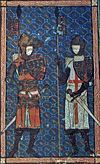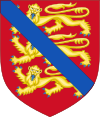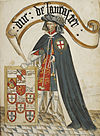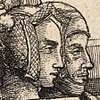
Henry IV, also known as Henry Bolingbroke, was King of England from 1399 to 1413. His grandfather King Edward III had claimed the French throne as a grandson of Philip IV of France, and Henry continued this claim. He was the first English ruler since the Norman Conquest, over three hundred years prior, whose mother tongue was English rather than French.
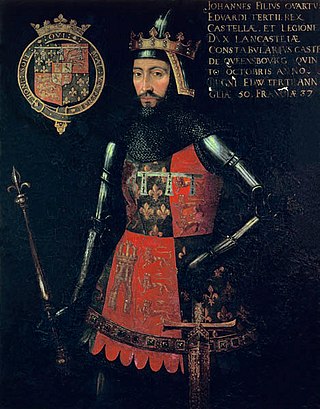
John of Gaunt, Duke of Lancaster was an English royal prince, military leader, and statesman. He was the fourth son of King Edward III of England, and the father of King Henry IV. Due to Gaunt's royal origin, advantageous marriages, and some generous land grants, he was one of the richest men of his era, and was an influential figure during the reigns of both his father and his nephew, Richard II. As Duke of Lancaster, he is the founder of the royal House of Lancaster, whose members would ascend the throne after his death. His birthplace, Ghent in Flanders, then known in English as Gaunt, was the origin of his name. When he became unpopular later in life, a scurrilous rumour circulated, along with lampoons, claiming that he was actually the son of a Ghent butcher. This rumour, which infuriated him, may have been inspired by the fact that Edward III had not been present at his birth.

The Dukedom of Lancaster is an English peerage merged into the crown. It was created three times in the Middle Ages, but finally merged in the Crown when Henry V succeeded to the throne in 1413. Despite the extinction of the dukedom the title has continued to be used to refer to the reigning monarch of the United Kingdom in relation to the County Palatine of Lancaster and the Duchy of Lancaster, an estate held separately from the Crown Estate for the benefit of the sovereign.

The House of Lancaster was a cadet branch of the royal House of Plantagenet. The first house was created when King Henry III of England created the Earldom of Lancaster—from which the house was named—for his second son Edmund Crouchback in 1267. Edmund had already been created Earl of Leicester in 1265 and was granted the lands and privileges of Simon de Montfort, 6th Earl of Leicester, after de Montfort's death and attainder at the end of the Second Barons' War. When Edmund's son Thomas, 2nd Earl of Lancaster, inherited his father-in-law's estates and title of Earl of Lincoln he became at a stroke the most powerful nobleman in England, with lands throughout the kingdom and the ability to raise vast private armies to wield power at national and local levels. This brought him—and Henry, his younger brother—into conflict with their cousin King Edward II, leading to Thomas's execution. Henry inherited Thomas's titles and he and his son, who was also called Henry, gave loyal service to Edward's son King Edward III.
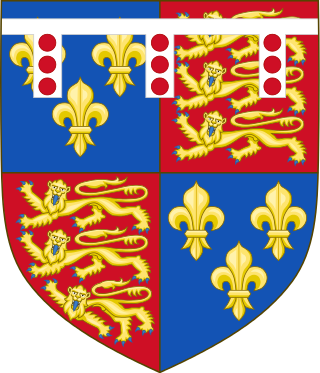
The House of York was a cadet branch of the English royal House of Plantagenet. Three of its members became kings of England in the late 15th century. The House of York descended in the male line from Edmund of Langley, 1st Duke of York, the fourth surviving son of Edward III. In time, it also represented Edward III's senior line, when an heir of York married the heiress-descendant of Lionel, Duke of Clarence, Edward III's second surviving son. It is based on these descents that they claimed the English crown. Compared with its rival, the House of Lancaster, it had a superior claim to the throne of England according to cognatic primogeniture, but an inferior claim according to agnatic primogeniture. The reign of this dynasty ended with the death of Richard III of England at the Battle of Bosworth Field in 1485. It became extinct in the male line with the death of Edward Plantagenet, 17th Earl of Warwick, in 1499.

John Beaufort, 1st Duke of Somerset, 3rd Earl of Somerset, KG was an English nobleman and military commander during the Hundred Years' War. He was the maternal grandfather of Henry VII.

The Lord High Steward is the first of the Great Officers of State in England, nominally ranking above the Lord Chancellor.

Earl of Leicester is a title that has been created seven times. The first title was granted during the 12th century in the Peerage of England. The current title is in the Peerage of the United Kingdom and was created in 1837.

Henry, 3rd Earl of Leicester and Lancaster was a grandson of King Henry III of England (1216–1272) and was one of the principals behind the deposition of King Edward II (1307–1327), his first cousin.
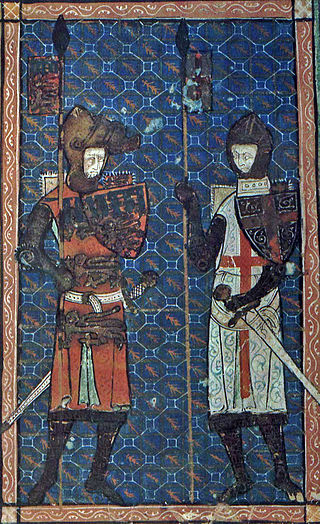
Edmund, Earl of Lancaster and Earl of Leicester nicknamed Edmund Crouchback was a member of the House of Plantagenet. He was the second surviving son of King Henry III of England and Eleanor of Provence. In his childhood he had a claim on the Kingdom of Sicily; however, he never ruled there. He was granted all the lands of Simon de Montfort in 1265, and from 1267 he was titled Earl of Leicester. In that year he also began to rule Lancashire, but he did not take the title Earl of Lancaster until 1276. Between 1276 and 1284 he governed the counties of Champagne and Brie with his second wife, Blanche of Artois, in the name of her daughter Joan, and he was described in the English patent rolls as earl of Lancaster and Champagne. His nickname, "Crouchback", may be a corruption of 'crossback' and refer to his participation in the Ninth Crusade.
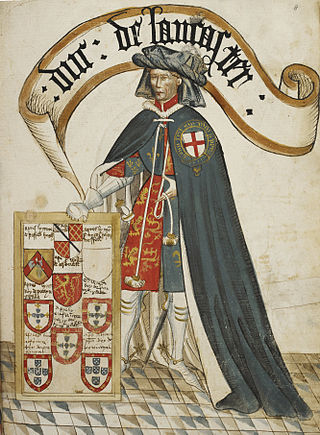
Henry of Grosmont, Duke of Lancaster was an English statesman, diplomat, soldier, and Christian writer. The owner of Bolingbroke Castle in Lincolnshire, Grosmont was a member of the House of Plantagenet, which was ruling over England at that time. He was the wealthiest and most powerful peer of the realm.
Margaret of Norfolk or Margaret of Brotherton, in her own right Countess of Norfolk, was the daughter and eventual sole heir of Thomas of Brotherton, eldest son of King Edward I of England by his second marriage. In 1338, she succeeded to the earldom of Norfolk and the office of Earl Marshal.

The House of Plantagenet was a royal house which originated from the lands of Anjou in France. The family held the English throne from 1154 to 1485, when Richard III died in battle.
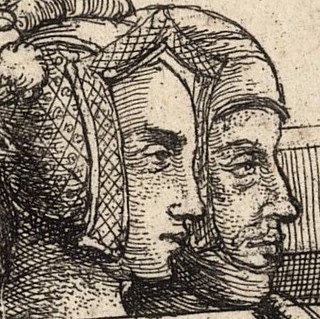
Blanche of Lancaster was a member of the English royal House of Plantagenet and the daughter of the kingdom's wealthiest and most powerful peer, Henry of Grosmont, 1st Duke of Lancaster. She was the first wife of John of Gaunt, the mother of King Henry IV, and the grandmother of King Henry V of England.

Isabella of Castile, Duchess of York was the daughter of King Peter and his mistress María de Padilla. She accompanied her elder sister, Constance, to England after Constance's marriage to John of Gaunt, 1st Duke of Lancaster, and married Gaunt's younger brother, Edmund of Langley, 1st Duke of York.
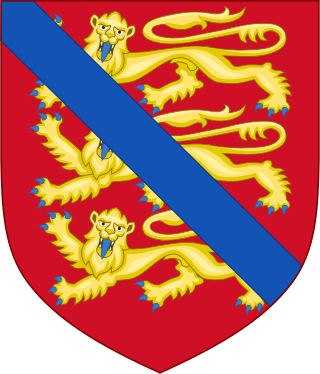
Joan of Lancaster sometimes called Joan Plantagenet after her dynasty's name, was the third daughter of Henry, 3rd Earl of Lancaster and Maud Chaworth.

King Edward III of England and his wife, Philippa of Hainault, had eight sons and five daughters. The Wars of the Roses were fought between the different factions of Edward III's descendants. The following list outlines the genealogy supporting male heirs ascendant to the throne during the conflict, and the roles of their cousins. However to mobilise arms and wealth, significant major protagonists were Richard Neville, 16th Earl of Warwick, Edmund Beaufort, 4th Duke of Somerset, and Henry Percy, 3rd Earl of Northumberland, and their families. A less powerful but determining role was played by Humphrey Stafford, 1st Duke of Buckingham, and Elizabeth Woodville and their families.

The Barony of Halton, in Cheshire, England, comprised a succession of 15 barons and hereditary Constables of Chester under the overlordship of the Earl of Chester. It was not an English feudal barony granted by the king but a separate class of barony within the County Palatine of Chester.





